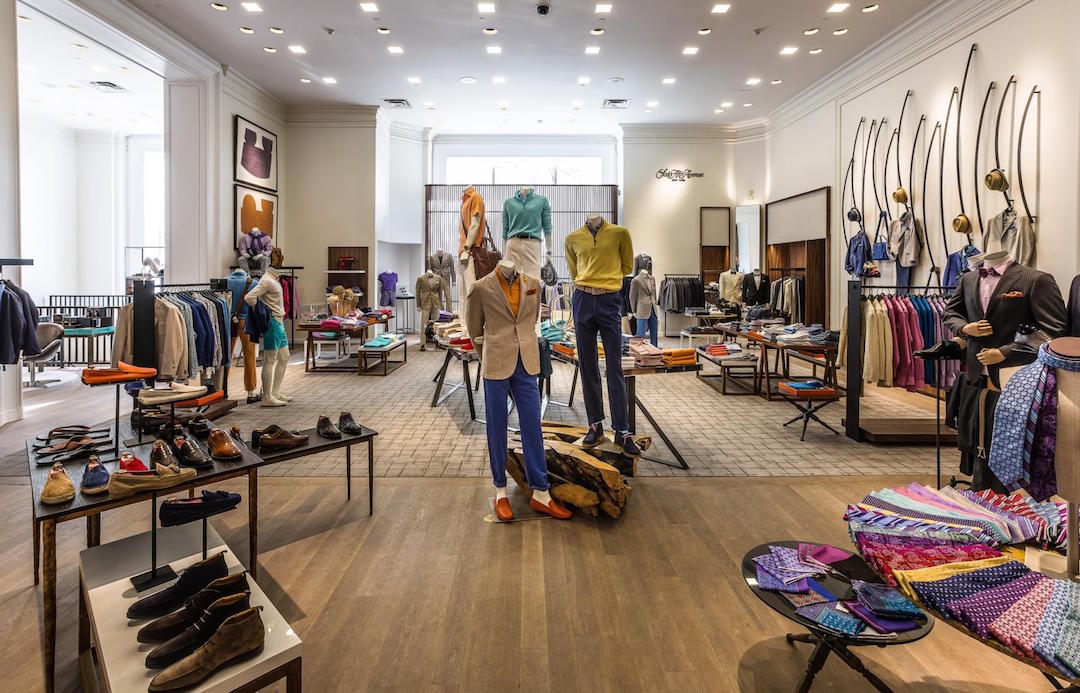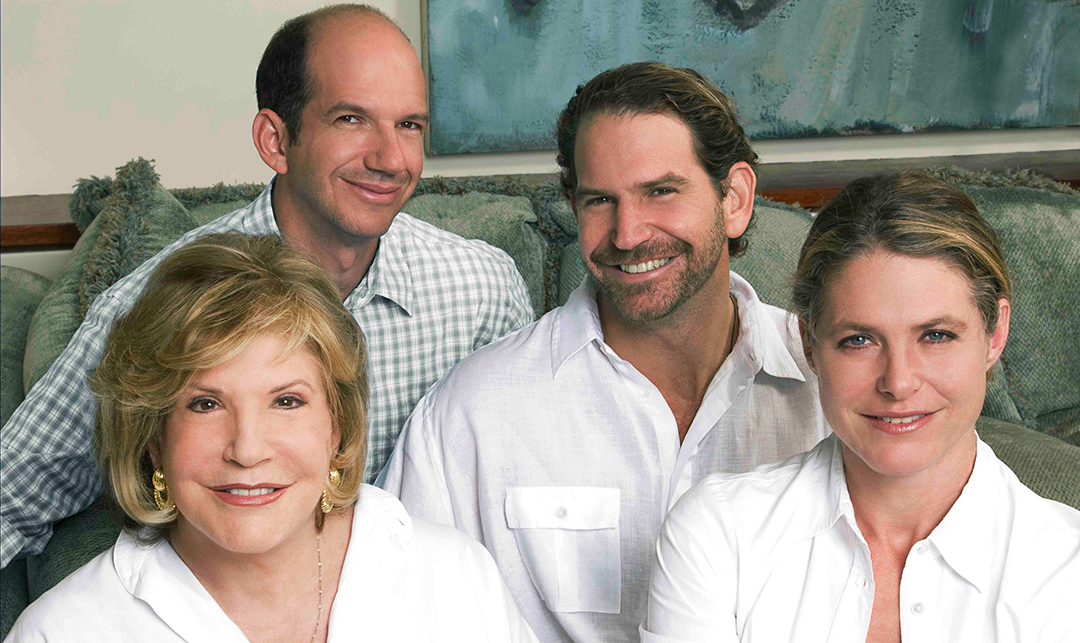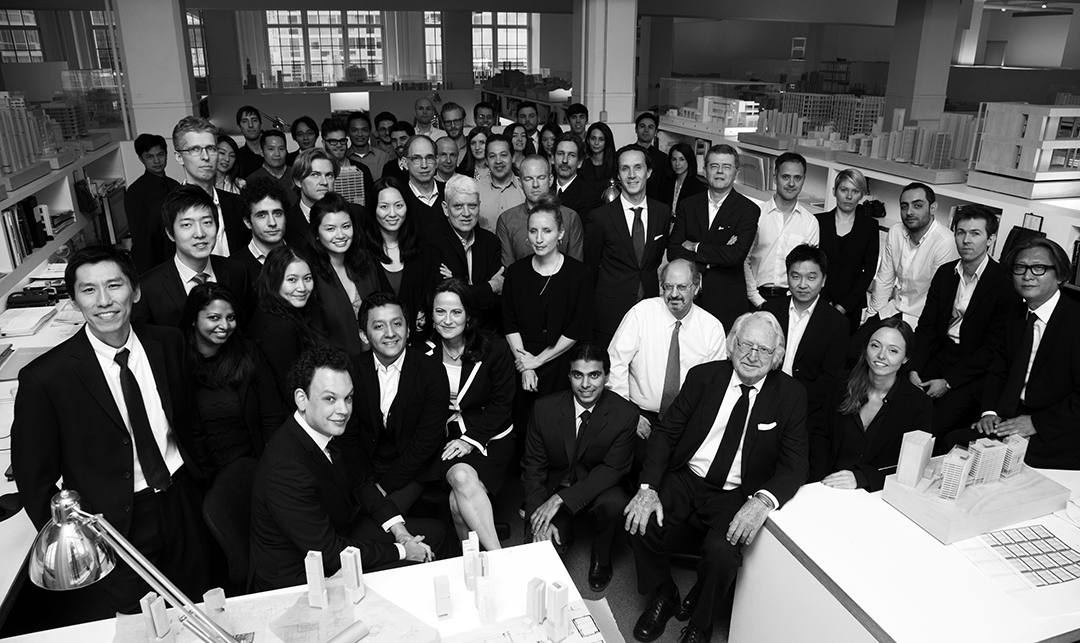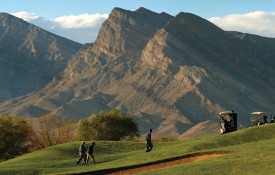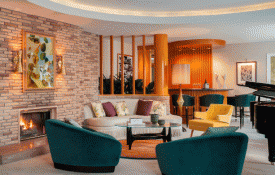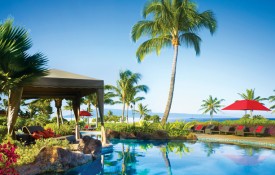For first-timers wishing to check off some of the continent’s greatest experiences in one go, or nature-loving families ready for the trip of a lifetime, Africa offers a trio of destinations with intimate endangered wildlife encounters, as well as epic art, design, and culinary rendezvous. In two weeks, it’s possible to see and do it all at an unhurried pace; the Southern Hemisphere’s summer, mid-December to early February, is ideal, as is June to September when Cape Town is chilly, Rwanda is dry, and Madagascar boasts winds perfect for kitesurfing. Pack ensembles for long, wine-focused farm lunches and starlit suppers, majestic hikes, and leisurely island explorations, and you’re set, since Singita supplies your gorilla-trekking gear. This itinerary requires a serious investment, but with a staggering ROI.
Culinary and Design Delights in Cape Town

Along with the iconic, gargantuan Table Mountain, windswept white-sand beaches—some penguin studded—botanical gardens, and dramatic peninsulas cement Cape Town’s roots in the serene natural world. But much as it’s beloved by active outdoorsy types, it’s adored by designers, artists, and chefs who draw nonstop inspiration from its diverse landscape. Two brand-new, fine-dining debuts in quaint vino-soaked Franschhoek—Le Chêne by award-winning chef Darren Badenhorst at the billionaire-owned Leeu Estates, and Epice, led by chef Charné Sampson, formerly of La Colombe—are stretching the bounds of culinary imagination. In February 2020, the internationally attended conference Design Indaba celebrates 25 years of pushing forward innovations in African and global design. Outfitter Roar Africa’s focus on the continent’s “other big five”—art, fashion, food, culture, and design—translates to ever-evolving bespoke city tours with exclusive visits to the latest architectural gems, distinctive private homes, and art collectives. At the center of the art conversation is Zeitz Museum of Contemporary Art Africa (MOCAA), which lives on the first few levels of the historic grain silo that elevator architect Thomas Heatherwick transformed in 2017.

Upstairs is The Silo, a color-drenched, 28-room Royal Portfolio hotel with a rooftop pool that wows the most jaded of travelers. The views from the T-shaped, infinity-edge structure alone—a 218-foot-high panorama encompassing the Atlantic Ocean, Signal Hill, Table Mountain, and the V&A Waterfront—are enough to make a strong case for a stay, since it’s available to guests only. But every bit of interior space is compelling. Each room is wholly unique, thanks to owner Liz Biden, who’s amassed some 300 pieces of art from emerging and eminent contemporary artists across the continent—such as Cyrus Kabiru and Nandipha Mntambo—with much of it hanging above upholstered headboards and freestanding bathtubs placed behind faceted windows. An art concierge conducts bespoke tours of the in-house collection, MOCAA, local galleries, and artist studios. As of 2019, seaside private residences are also available in tony Bantry Bay and Clifton, spoiling privacy seekers with flawlessly styled choice. From $950/night, theroyalportfolio.com.
Meet Rwanda’s Mountain Gorillas

Part of Rwandan President Paul Kagame’s post-genocide leadership is a monthly community workday, Umuganda, that guarantees a virtually trash-free landscape across this beautiful country. In 2017, the Rwanda Development Board doubled the permit price, to $1,500, to venture into Volcanoes National Park for those in pursuit of a sighting of endangered mountain gorillas. He also invited world-class brands into the country. Wilderness Safaris debuted its opulent Bisate Lodge in 2017, and One&Only opened Gorilla’s Nest in November 2019, while conservation company Singita’s Kwitonda Lodge debuted in August 2019 on 178 previously cleared acres its working diligently to reforest—guests can even plant trees during downtime. Dedicated to sustainability and community, 80 percent of all building materials were sourced locally, including prolific supplies of stone, 800,000 bricks handmade on-site and fashioned into brutalist curvatures, and woven bamboo ceiling panels—all a pioneering rarity. In the striking main lodge, these elements imbue an elevated sense of culture and craftsmanship that continues in eight standalone suites. Each invites the imposing volcanoes inside through massive windows framing verdant landscapes, a counterbalance to interiors styled in sunset hues. Indoor and outdoor showers frame monolithic bathtubs in large bathrooms that hold a massage table, incense, and Tibetan singing bowls for spa treatments. At mealtime, mouthwatering, ever-changing meals feature produce from the on-site garden: local Kinigi potato gnocchi one night, a traditional Rwandan feast another, and a smorgasbord of tapas—ginger caramel chicken, a health bowl, watermelon salad, and tomato corn focaccia—the next afternoon. Between the heated plunge pools, outdoor (and indoor) fireplaces, and bar, it’s hard to leave the cozy private confines.

Guests can do as little or as much as they wish, referencing the provided iPads for outings such as golden monkey trekking, colorful market visits, and stick-carving lessons. But there’s no question that the endangered mountain gorillas are the true stars. Just 1,063 exist in the world, some 480 in this national park. Elsewhere in the small country it’s possible to see the big five and chimpanzees, but Volcanoes is gorilla central. Before the appointed morning you’ll be briefed in the educational Conservation Room by Singita’s staff specialist and then outfitted in the Gear Room with head-to-toe waterproof gear, gloves, pack, and poles. In the morning, after a short drive to begin the lush hike, trekkers may see signs of buffalo or even elephants, but the focus is singular: a gorilla family that each group of eight plus guides is given one hour to enjoy (VIPs and Kagame go with the exuberant, silverback-imitating Francois Bigirimana, whose experience dates to Dian Fossey’s day). The visit could involve adolescents sliding down trees and playfully beating their chests or a conversation via their language of grunts and groans with a silverback being groomed by one of his harem, a mother nursing her overwhelmingly humanlike, curly headed infant, or open-mouth bamboo chomping and thistle slurping. It’s surreal, intimate, and humbling. After a muddy day in the wild with our magnificent distant relatives, Singita staff greets guests with gluhwein and slippers, all the better to ponder the transformative power of a singular experience. From $1,495/person/night, singita.com.
Dive, Fly, and Trek in Madagascar
There is nothing quite so exceptionally beautiful as the private helicopter ride to Time + Tide Miavana, secluded off Madagascar’s northeast coast on the paradisiacal two-mile isle of Nosy Ankao. French explorer, conservationist and Time +Tide partner Jean-Christophe Peyre first discovered its charms 30 years ago and, in conjunction with Time + Tide’s chairman, Thierry Dalais, began a marine algae business, employing islanders in an effort to give them an economic benefit. Climate change and other factors put an end to the business, at which point Dalais conceived Time + Tide Miavana to help ensure long-term sustainability for the region through tourism.

Construction took five years by an overwhelmingly local team, including 95 percent of the island’s 400 villagers, before opening mid-2017. It feels like hovering over the edge of the earth, nothing but virgin coastline and jewel-toned coral reefs below, plus perhaps some sea turtles, humpback whales, and bull sharks hunting tuna. The spectacle of this deluxe eco-resort is rooted in immersion in a magnificently biodiverse landscape, accomplished through not only heli-adventures over the aforementioned aquatic wonders and to many more remote marvels on the mainland—see: golden-crowned sifaka–filled hikes, cave adventures, and treks through geological phenomena—but also blue safaris via scuba, snorkel, and boat. You might be out jigging for bluefin when a whale shark swims right up, or kitesurfing and spy a ray gliding beneath. Exotic birds, geckos, and lizards seem to line the path into the forest to track down the translocated crowned lemurs brought to this island from a high-poaching region as part of an ongoing conservation project that is working to move a handful more this year. Of course, it’s not all adrenaline-fueled and wildlife-focused fun. Fourteen sprawling beach villas that embody indoor-outdoor living adhere to a breezy palette combining sea and sky that seems to urge relaxation with abundant inviting places to lounge, not to mention plentiful beverages and bites by the brand-new chef on a mission to introduce ever-more-sustainable suppliers and ingredients.

Other options: Take a 4×4 to the inactive lighthouse for a sunset toast (en route, stop by the authentic, modest village for a quick ball game or chat in French with the smiling kids), cruise to a deserted white sand–fringed island for a five-star picnic, or dine inside the Cabinet des Curiosities, a lofty Malagasy structure holding museum-worthy fascinations ranging from amulets and elephant bird skeletons to model ships and battle paraphernalia. This isn’t just another pretty island, it’s a spellbinding place like no other. From $2,900/person/night, timeandtideafrica.com.
Getting There:
New York to Cape Town: Fly Delta/KLM’s one-stop to Cape Town via Amsterdam (20 hours in all) or book Cathay Pacific’s first class, just updated with wellness in mind to include superfood bowls, cold-pressed juices, Riedel wine glasses, 600-thread-count Bamford bedding, and pillowy turndown through Hong Kong (totaling 30 hours of flying).
Cape Town to Rwanda: Hop aboard South African Airways’ two-hour night flight to Johannesburg and continue flying 3.5 hours to Kigali in time for breakfast, before arriving at Volcanoes National Park.
Rwanda to Madagascar: Fly Ethiopian Airlines through Addis Ababa to Nosy Be, Madagascar (10 hours in all), where you’ll be met by Time + Tide’s unmissable aquamarine-and-white-striped helicopter.
For help: Leave everything to luxury tour outfitter Ker & Downey (kerdowney.com) to ensure the best seats and smoothest connections or private charters.


